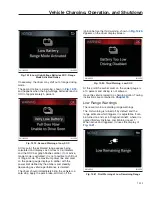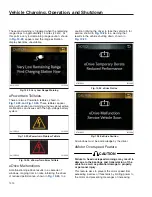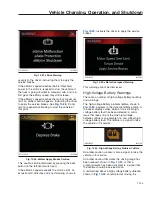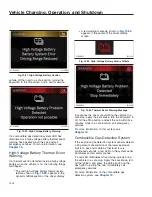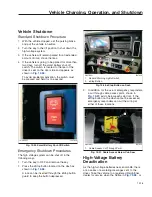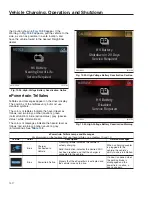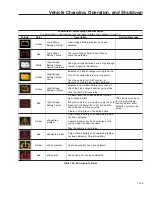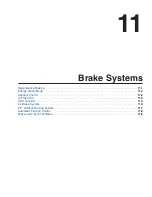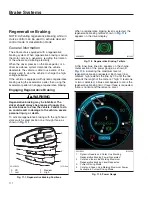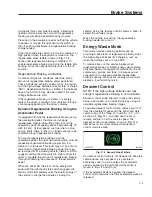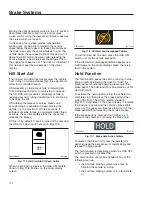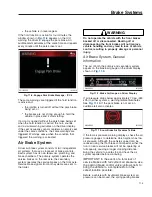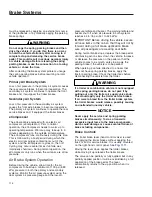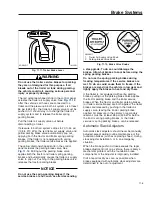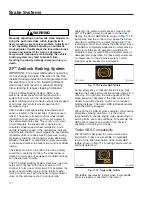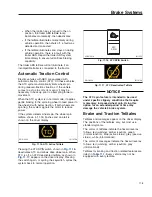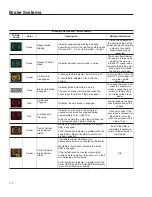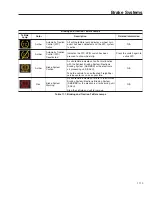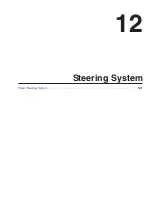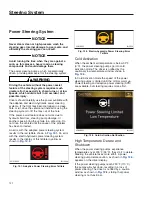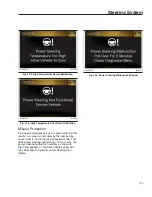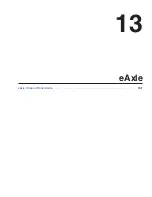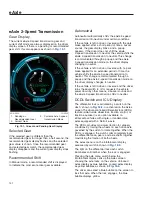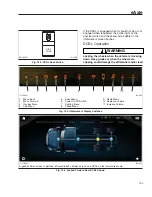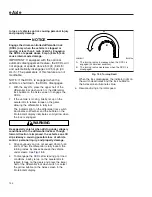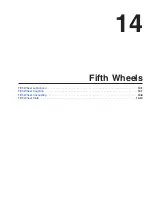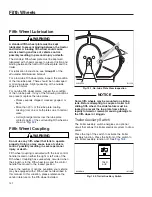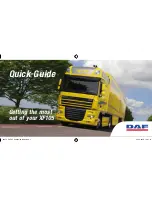
WARNING
Do not use the trailer service brakes for parking;
they are not designed for this purpose. If air
bleeds out of the trailer air tank during parking,
the vehicle could roll, causing serious personal
injury or property damage.
The red octagonal-shaped knob in the control panel
actuates the trailer air supply valve. See
After the vehicle’s air hoses are connected to a
trailer and the pressure in both air systems is at least
65 psi (448 kPa), the trailer air supply valve must be
pushed in. It should stay in to charge the trailer air
supply system and to release the trailer spring
parking brakes.
Pull the trailer air supply valve out before
disconnecting a trailer.
If pressure in both air systems drops to 20 to 45 psi
(138 to 310 kPa), the red trailer air supply valve and
yellow parking brake valve automatically pop out,
applying both the tractor and trailer spring parking
brakes. If the trailer is not equipped with spring
parking brakes, the trailer service brakes are applied.
The yellow diamond-shaped knob in the control
panel actuates the parking brake valve. See
. Pulling out the parking brake valve
applies both the tractor and trailer spring parking
brakes and automatically causes the trailer air supply
valve to pop out. Pushing in the parking brake valve
releases the tractor parking brakes.
NOTICE
Do not use the spring parking brakes if the
service brakes are hot, such as after descending
a steep grade. To do so could damage the
brakes. Allow hot brakes to cool before using the
spring parking brakes.
Do not use the spring parking brakes during
freezing temperatures if the service brakes are
wet. To do so could cause them to freeze. If the
brakes are wet, drive the vehicle in low gear and
lightly apply the brakes to heat and dry them.
If the trailer is not equipped with spring parking
brakes, pulling out the parking brake valve applies
the tractor parking brake and the trailer service
brakes. When the tractor and trailer parking brakes
(or trailer service brakes) are both applied, the trailer
brakes are released by pushing in the trailer air
supply valve, leaving the tractor parking brake
applied. Air pressure in the primary or secondary
reservoir must be at least 65 psi (448 kPa) before
the tractor spring parking brakes, or the trailer
service or spring parking brakes, can be released.
Automatic Slack Adjusters
Automatic slack adjusters should never be manually
adjusted except during routine maintenance of the
foundation brakes (such as replacing shoes), during
slack adjuster installation, or in an emergency
situation.
When the brake pushrod stroke exceeds the legal
brake adjustment limit on a vehicle, there is likely a
mechanical problem with the foundation brake
components or the adjuster is improperly installed.
Visit a repair facility as soon as possible when
brakes equipped with automatic slack adjusters are
determined to be out of adjustment.
f610591
02/03/2017
Fig. 11.11, Trailer Brake Lever
f610291
02/02/2017
1
2
1.
Trailer Air Supply Valve Knob
2.
Parking Brake Valve Knob
Fig. 11.12, Brake Valve Knobs
Brake Systems
11.6
Summary of Contents for PX113064S T 2016
Page 4: ......
Page 10: ......
Page 18: ......
Page 58: ......
Page 86: ......
Page 112: ......
Page 122: ......
Page 142: ......
Page 154: ......
Page 155: ...12 Steering System Power Steering System 12 1...
Page 158: ......
Page 159: ...13 eAxle eAxle 2 Speed Transmission 13 1...
Page 176: ......
Page 190: ......
Page 202: ......
Page 222: ......
Page 223: ...20 Emissions Information Noise Emissions 20 1 Greenhouse Gas Emissions 20 1...
Page 229: ......
Page 236: ......

